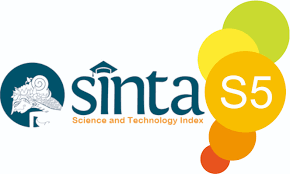Anomali Data Mining Menggunakan Metode K-Means Dalam Penilaian Mahasiswa Terhadap Pelayanan Prodi
Abstract
Cluster analysis is a data mining technique that aims to identify a group of objects that have the same characteristics. The number of groups that can be identified depends on the amount of data and the type of object, so that data problems arise when there is a change to a number of redundant data, but not all of it is changed where the data above is repeatedly made into one table with a different code as the primary key and there are anomalies Insertion, so K-means is one method of clustering data which is divided into the form of one or more clusters/groups that have the same characteristics. Student data clustering uses the k-means method, consisting of student assessments. This study uses student assessment data. Then it was concluded that the assessment group was based on reliability aspects: the ability of lecturers, education staff and administrators to provide services, responsiveness aspects: the willingness of lecturers, education staff and administrators to help students and provide services quickly, aspects of certainty ( assurance): the ability of lecturers, staff and administrators to give confidence to students that the services provided are in accordance with the provisions, aspects of empathy (empathy): the willingness/concern of lecturers, staff and managers to give attention to students, tangibles aspects: students' assessment of the adequacy , accessibility, quality of facilities and infrastructure from the grouping results based on reliability, responsiveness, assurance and empathy data.
Downloads
Copyright (c) 2023 Deti Karmanita; Billy Hendrik

This work is licensed under a Creative Commons Attribution-ShareAlike 4.0 International License.
An author who publishes in Jurnal Media Infotama agrees to the following terms:The author holds the copyright and grants the journal the right of first publication of the work simultaneously licensed under the Creative Commons Attribution-Share Alike 4.0 License which allows others to share the work with acknowledgment of the work's authorship and initial publication in this journal.Submission of a manuscript implies that the submitted work has not been previously published (except as part of a thesis or report, or abstract); that it is not being considered for publication elsewhere; that its publication has been approved by all co-authors. If and when a manuscript is accepted for publication, the author retains the copyright and retains the publishing rights without limitation.
For new inventions, authors are advised to administer the patent before publication. The license type is CC-BY-SA 4.0.
MEDIA INFORMATION REVIEW: Journal of the Faculty of Computer Science is licensed under a Creative Commons Attribution-ShareAlike 4.0 International License.You are free to:Share
— copy and redistribute material in any medium or formatAdapt
— remix, modify and develop materialfor any purpose, even commercial.
The licensor cannot revoke this freedom as long as you follow the license terms












.png)


